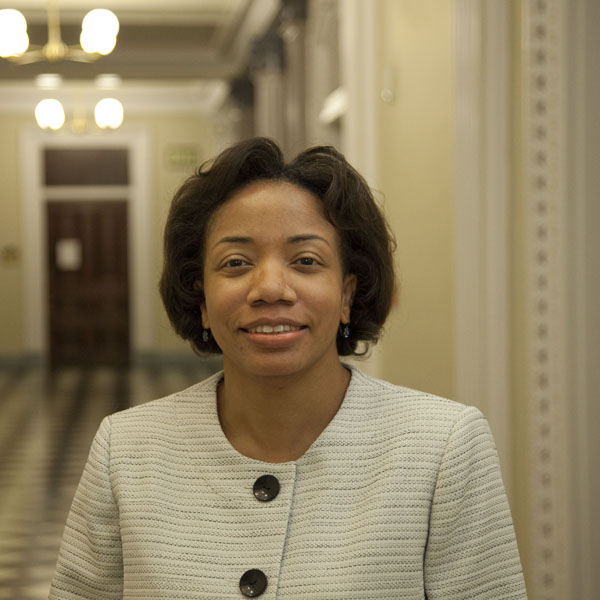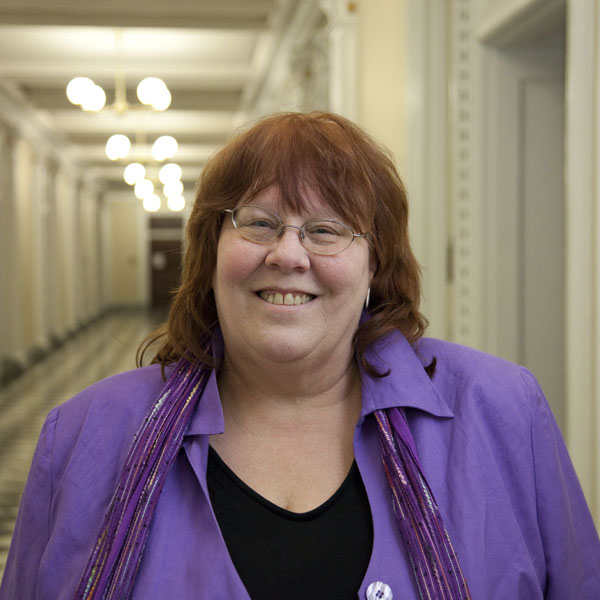Champions of Change Blog
Making the Full Participation of Women a Priority
Posted by on December 14, 2011 at 12:00 PM EDT
Recently, I was included as one of the White House Champions of Change on the topic of the recruitment and retention of girls and women in STEM fields. Of course there are many, many people who are champions for their efforts in this area, lots of them far more deserving than I am, but I am happy to use this occasion to share a few quick thoughts on this topic.
First, it is great to see computer science included by the White House in this event. Computing is a hugely important part of the STEM world in terms of its impact on our economy and our lives, and the fact that the greatest current and projected future demand for STEM jobs is in computing. Still, it is a relative newbie to the STEM table and it’s important that it has a seat.
Women in STEM = American Economic Competitiveness
Posted by on December 13, 2011 at 2:30 PM EDT
I am something of an accidental champion of women in STEM fields. In 2008 two young women in my AP Computer Science class applied for and won the National Center for Women & Information Technology's (NCWIT) award for "Aspirations in Computing." When they won the award, I presented it to them at our school's annual award ceremony and it was the only award given by my department to anyone. These two girls were both excellent students and naturally inclined to computer science in the first place, but they were also really interesting people and what you might call “cool”. The next year almost half of my AP class was girls, and again a girl in the class won the NCWIT award and I called her up on stage, alone, at the school's award ceremony. Since then I've never had a gender equity problem in class. Year after year many girls cite seeing those who came before them on stage as a big reason why they gave computer science a try.
As a teacher I have been really lucky to have outstanding female students who won this award, basically on their own, and who were able to influence other girls to try my class. However, once I had all these terrific girls in my classes, I was filled with dread that I would somehow screw it up. So, I began to look very deliberately at my courses to see if there were any differences between the boys and the girls, what they liked and what they didn't like. Quickly, my eyes were opened to the issues of both gender and racial equality that are crippling computer science, American education, and the nation's economic outlook as well. I don't really claim to have hard answers but I can tell you what I do in my classes, why I made some choices, and why I think these things work.
Our Challenge: Change the Culture, Support Women in STEM
Posted by on December 13, 2011 at 12:16 PM EDT
What are the words that describe my reaction to this Champion of Change award? Surprised. Excited. Humbled. Then, challenged.
Challenged because of the opportunity to further a conversation. Challenged to find answers to an important, national problem. Challenged, really, to ask the right questions.
Questions, after all, are what really spur the STEM practitioner.
In my professional life, I am always questioning. What’s really the problem? What’s the best approach? What’s the worst that can happen? In my professional life, I create “things”—medical devices, teams, plans.
In my “spare time,” I also create things. And, I hope that I have taken my best skills—and a small army of dedicated team members—to create something about which I am proud and passionate: We call it “Tech Savvy.”
"Tech Savvy" is a little hard for me to describe in a blog; I always start by giving descriptors for the event: Hundreds of middle school girls and their parents and teachers. Fun technology workshops where students type DNA, unearth fossils, and learn about polymers from gumdrops. Illuminating parent and teacher sessions. A (hopefully) cool theme. “Savvy skills” workshops including negotiation, interviewing skills, ethics. SAT prep for high school students. Mentoring opportunities.
Ensuring Equal Education and Employment Opportunities for All Citizens
Posted by on December 12, 2011 at 7:12 PM EDT
I am thrilled to be nominated for and recognized as a Champion of Change under President Obama’s Winning the Future Initiative. My work to inform and encourage girls (and other under-represented groups) to explore STEM courses, develop STEM skills, and prepare for STEM careers has occurred within the context of a long and fine tradition of ensuring equal education and employment opportunities for all citizens. I represent a network of state leaders created by Title IX of the Education Amendments of 1972, by Title IV of the Civil Rights Act of 1964, by the 1976 federal Vocational Education Act and subsequent Perkins Act reauthorizations working to eliminate sex role stereotyping, bias and discrimination from public school courses, programs and activities. Sadly, all federal policy and investment for these networks was eliminated by 1998.
Using Games and Digital Media to Engage Girls in Computing
Posted by on December 12, 2011 at 4:29 PM EDT
Learning experiences outside of the classroom can be crucial in shaping young women’s interest in computer science-related courses and careers, as well as in providing them with a foundation of skills and knowledge that can facilitate their success in more formal education. Notably, video gaming figures prominently as a starting point for boys’ interest in computer science, though not for girls. Simply playing games is not the crucial factor, but having the opportunity to create new content for games, modify the underlying software code, and in the process gain an understanding of how computers work as well as a desire to learn more about them. Games become exemplars for the amazing things that can be done with a knowledge of computing. Gaming also seems to offer these boys a means of developing technology-oriented peer social networks, something that even more tech-oriented girls seem to lack. These networks are crucial for sharing knowledge, resources (such as hardware and software), and social reinforcement for an interest in computing.
Tyson Foods Benefits from Recruiting Veterans
Posted by on November 16, 2011 at 1:00 PM EDT
I’m fortunate to work for a company that puts a great deal of stock in recruiting and hiring our nation’s military veterans. Tyson Foods’ business is filled with diverse disciplines -- from logistics and transportation, to operations, to human resources, to accounting and finance – and some of the best trained, highly-motivated individuals come to us by way of the U.S. military. If they’ve learned how to perform at their best under fire defending our country, it stands to reason they can perform under fire in a commodities driven business such as ours.
It’s important our business continues to thrive. It’s important to for the future of America, for sure, but also for the world. Our company ensures a steady supply of safe nutritious protein is distributed to retail grocers, further processed food makers and foodservice suppliers. All 115,000 of our team members are very aware that what we do is vitally important because we feed people; we feed families just like their own. As we expand our global reach, military veterans, reservists and their family members will play a significant role in our successes.
Learn more about Veterans
- &lsaquo previous
- …
- 144
- 145
- 146
- 147
- 148
- 149
- 150
- 151
- 152
- …
- next &rsaquo
White House Blogs
- The White House Blog
- Middle Class Task Force
- Council of Economic Advisers
- Council on Environmental Quality
- Council on Women and Girls
- Office of Intergovernmental Affairs
- Office of Management and Budget
- Office of Public Engagement
- Office of Science & Tech Policy
- Office of Urban Affairs
- Open Government
- Faith and Neighborhood Partnerships
- Social Innovation and Civic Participation
- US Trade Representative
- Office National Drug Control Policy
categories
- AIDS Policy
- Alaska
- Blueprint for an America Built to Last
- Budget
- Civil Rights
- Defense
- Disabilities
- Economy
- Education
- Energy and Environment
- Equal Pay
- Ethics
- Faith Based
- Fiscal Responsibility
- Foreign Policy
- Grab Bag
- Health Care
- Homeland Security
- Immigration
- Innovation Fellows
- Inside the White House
- Middle Class Security
- Open Government
- Poverty
- Rural
- Seniors and Social Security
- Service
- Social Innovation
- State of the Union
- Taxes
- Technology
- Urban Policy
- Veterans
- Violence Prevention
- White House Internships
- Women
- Working Families
- Additional Issues

